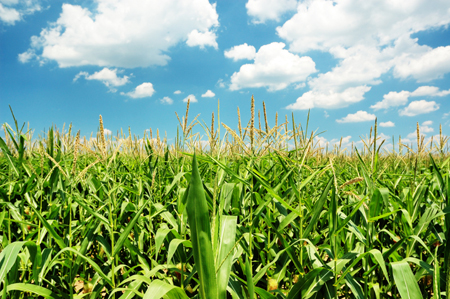 (Agriculture.com) – The 2014 battle for acres between corn and soybeans, according to new information, may not be the fight it’s been in years past.
(Agriculture.com) – The 2014 battle for acres between corn and soybeans, according to new information, may not be the fight it’s been in years past.
Though soybeans are likely to lead the way in profitability for the typical corn and soybean farmer in Illinois this year, one of that state’s leading ag economists says corn could return as the winner in the 2014 acreage battle because of the crop’s expected gains in profit potential. But, don’t expect a huge shift.
“Between September 2010 and August 2013, the soybean-to-corn price ratio has been below the 2.52 average. Overall, price in the 3 years between September 2010 and August 2012 have favored corn production. In fall 2013, the soybean-to-corn price ratio has moved significantly above the 2.52 average. Current harvest times bids for 2013 are near $4.30 per bushel for corn and $12.80 per bushel for soybeans, giving a soybean-to-corn price ratio of 2.97. This is a much higher ratio than in the three most recent years and is high by historical standards,” says University of Illinois Extension ag economist Gary Schnitkey. “Monthly soybean-to-corn price ratios have exceeded 2.98 in only 15% of the months between January 1975 and September 2013. The relatively high ratios in fall 2013 result in higher 2013 soybean returns relative to corn.
“Overall, the above prices suggest that 2013 soybean returns will be relatively higher than 2013 corn returns. Harvest-time bids in 2014 suggest a more ‘normal’ relationship between corn and soybean returns,” he adds.
But, looking to next year, that’s going to change, due in large part to the fertilizer market. Prices are lower for that key input, and that’s likely to help push corn ahead of soybeans in the profitability race next year, Schnitkey says.
“Fertilizer costs for corn-after-soybeans is projected at $135 per acre, considerably below the $200 actual value for 2012 and $170 projected value for 2013. Fertilizer prices have declined considerable from 2013 levels,” he says. “Anhydrous ammonia prices currently are in the high $600 per ton range, compared to the mid to high $800 per ton range for much of the 2012-13 growing season. Lower fertilizer prices in general and nitrogen prices in particular causes corn returns to increase relative to soybean returns.”
Now, add in an expected more “normal” corn-soybean ratio for Schnitkey’s state of Illinois, and that’s more reason for corn to be more profitable. But, ultimately, the difference won’t be enough to justify major acreage swings.
“While the current 2013 soybean-to-corn price ratio is high, harvest-time bids for 2014 lead to near average soybean-to-corn price ratio. Near average prices, along with lower fertilizer costs, then lead to corn being projected more profitable than soybeans in 2014. While 2014 corn-minus-soybean returns are projected positive, corn returns are projected to exceed soybean returns by less than the average corn-minus-soybean returns from 2006-2012,” he says. “Overall, these return projections do not suggest large shifts in acres between corn and soybeans.”




